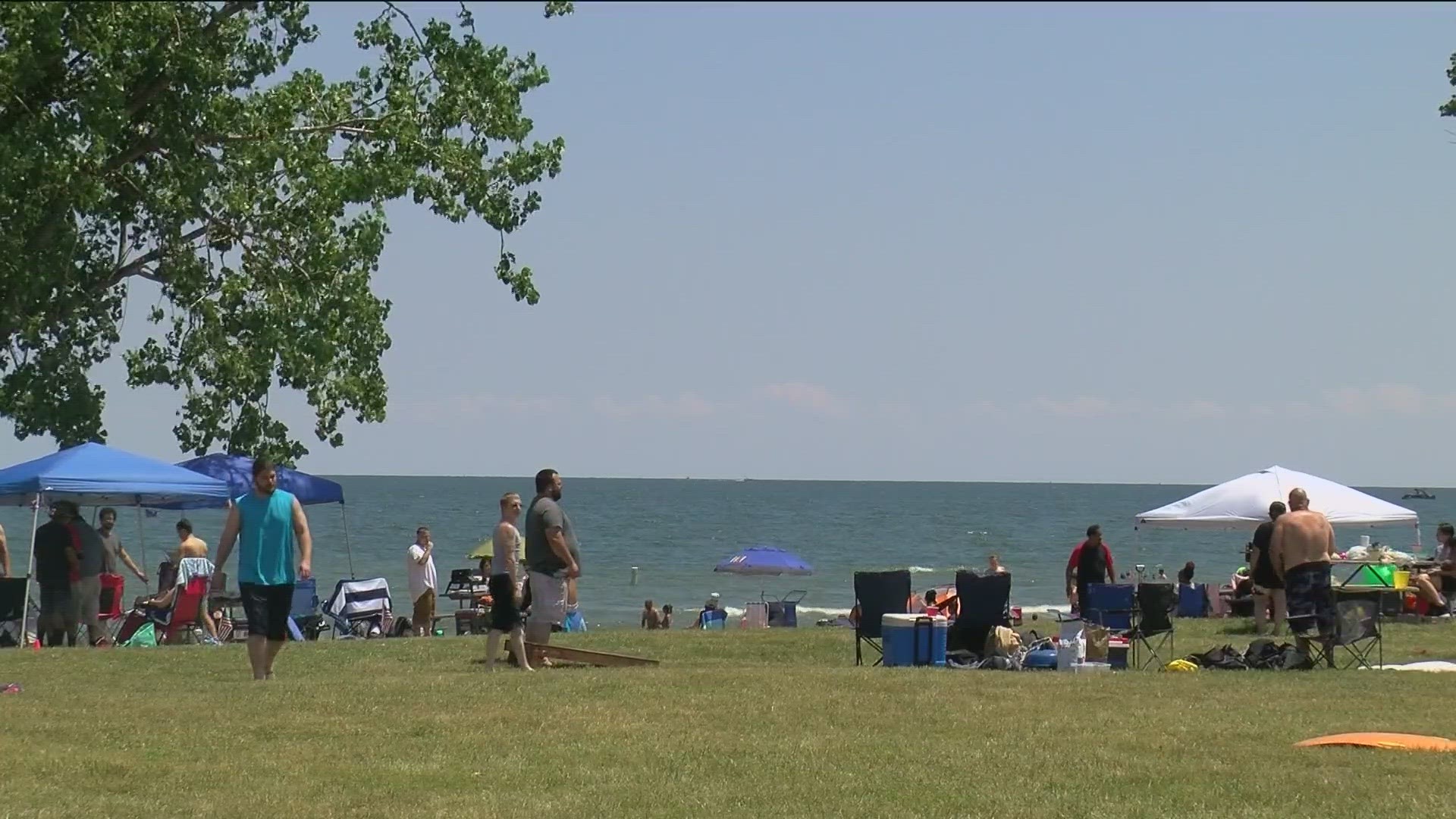TOLEDO, Ohio — Monday marked the start of Cold Water Safety Awareness Week. With this week’s temperatures surging to nearly 80 degrees, some people are itching to get on the water.
But did you know water temperatures take significantly longer to warm up? Lake Erie and surrounding lake water temperatures are around 45 degrees, so jumping in could be life or death during this time of year.
Here are steps you can take in order to stay safe in the water this spring.
1) The temperatures in rivers, ponds and lakes are still significantly colder than the weather may suggest
A Lake Erie water test on Tuesday measured 37 degrees, Brian Kaminski, ProMedica's vice president of quality and patient safety, said. That's in stark contrast to Tuesday's highs in the 70s. And even though temperatures throughout the rest of the week will be even closer to 80 degrees, the water will still take longer to warm up. It is going to be further into the spring or summer that water temperatures will become comfortable for swimming.
2) Jumping into cold waters can be a dangerous shock to your body
If people do the polar plunge, then why can't I jump into some cold water? They're trained for the frigid temperatures and know exactly what to expect when taking the plunge, Kaminski said.
If your body is not ready for cold temperatures, it can be a system shock.
Your "body reacts to that cold temperature by shaking, heart rate goes up the blood pressure goes up and it can cause cramping it can cause a loss of function and a loss of thinking clearly," Kaminski said.
It's not just cold water that can be unsafe, either.
"There truly is no temperature that we would say is absolutely safe because hypothermia can happen in water that is in the 70s," Kaminski said.
3) What do you do if you find yourself in cold waters?
First things first, be aware that the water temperatures are not suited for swimming right now, Kaminski said.
"The first part in awareness knowing that right now, the water temperature in any outdoor body of water is not comfortable for almost everybody out there," he said.
If you still choose to take a dip, Kaminski recommends being prepared with a flotation device like a life jacket to keep you above water if you become incapacitated.
Many companies also make clothing for chilly water swimming. Drysuits and wetsuits are both used for swimming but have some key differences.
Drysuits separate the individual from the chilly water and keep you completely dry. Most are also loose-fitting, meaning you can wear layers of clothing underneath them, according to diver supply company scuba.com.
Wetsuits work on the principle that your body is the best source of heat, according to scuba.com. They keep a layer of water closer to your skin that is warmed by your body temperature and are designed to be much tighter fitting than drysuits.
If you or someone else escapes from chilly waters, immediately get into a warm, dry and protected environment because your body's core temperature can continue to drop to dangerous levels after being removed from the water, Kaminski said.

